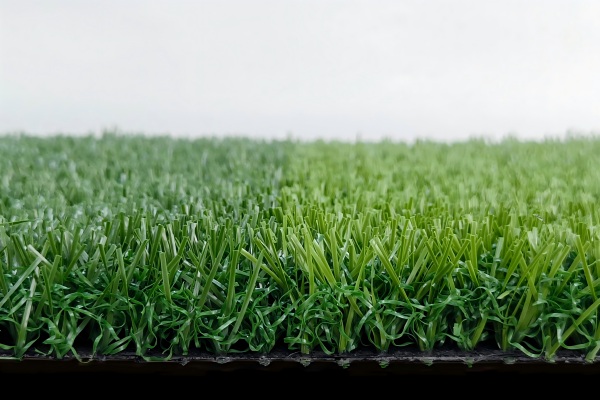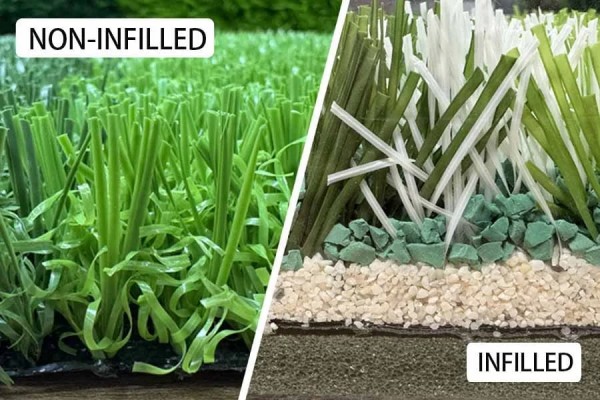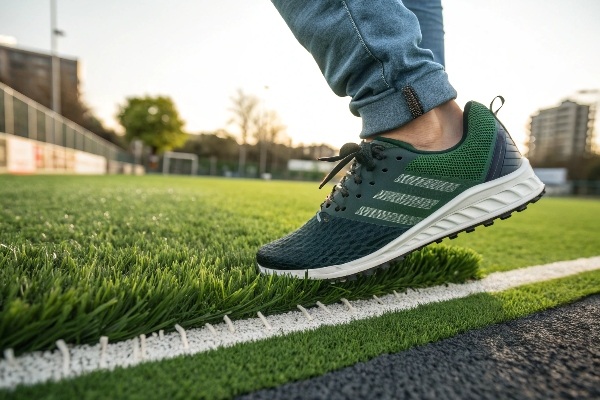Struggling to pick the right artificial grass for your project? The wrong choice can lead to poor performance and unhappy clients. Understanding the core differences is key to your success.
The best choice depends on your needs. Infill grass uses sand or rubber for resilience, making it ideal for sports. Non-infill grass has a built-in thatch layer for support, perfect for landscaping where low maintenance is a priority. Your project’s intended use is the deciding factor.

Making the right choice is crucial for your project’s budget and long-term performance. I’ve spent years helping clients navigate this decision, and it always comes down to a few key details. Let’s break down everything you need to know so you can choose with absolute confidence and avoid costly mistakes. This information will help you deliver the best possible result for your customers.
Why use infill for artificial grass?
You might wonder why you need to add material to brand new turf. Skipping this step can ruin the grass and create a poor, unsafe surface for players and users.
Infill is essential because it provides stability, resilience, and shock absorption. It keeps the grass fibers standing upright, mimics the feel of natural soil, and protects the turf’s backing from UV damage. This extends the lifespan and ensures top performance, especially for sports fields.

When I first started in the factory, I saw exactly how infill transforms a simple turf roll into a high-performance system. Without it, the grass is just a carpet. With it, it becomes a field. Let’s dive deeper into its critical functions.
The Foundation of Performance
Infill, typically silica sand and rubber granules, gives the turf system weight. This added weight is very important because it holds the turf in place, preventing it from shifting, expanding, or wrinkling with temperature changes and heavy use. For a large football field, this stability is non-negotiable. The infill also directly impacts how a ball behaves. I’ve seen tests where the ball bounce on a properly infilled field is almost identical to a high-quality natural grass pitch. It also gives players the right amount of traction and foot stability, reducing the risk of injury.
Protecting Your Investment
Beyond performance, infill acts as a protective layer. The grass fibers themselves need support to stay upright after constant foot traffic. The infill surrounds the base of each fiber, holding it up and preventing it from matting down. This drastically improves the turf’s durability and appearance over time. Furthermore, the infill covers the primary backing of the turf, shielding it from direct sunlight. This UV protection is vital for preventing the backing from becoming brittle and degrading, which ultimately protects your entire investment.
What is non-infill artificial grass1?
The idea of a clean, simple installation without messy infill is very attractive. But you might worry if a non-infill system is strong enough for your project’s demands.
Non-infill artificial grass is a modern turf engineered with a dense, curly thatch layer integrated at its base. This thatch structure provides the necessary support and cushioning for the grass blades, completely eliminating the need for sand or rubber infill. It’s designed for easier, cleaner installations.

I remember when non-infill products first came on the market. Many builders were skeptical, including me. But the technology has improved dramatically. The secret to its performance lies in its unique construction, which cleverly mimics the function of traditional infill. Let’s look at how it works.
The Engineering Behind It
The core of a non-infill product is the thatch. It is a texturized, crimped yarn woven densely between the straight, taller grass blades. When you push down on the grass, the tall blades bend, but this thatch layer acts like a powerful spring, absorbing the pressure and then pushing the blades right back up once the pressure is gone. We achieve this by using specific yarn shapes with good memory, like C-shaped or S-shaped fibers, combined with an extremely high stitch density. Think of it as having thousands of tiny, built-in cushions spread across every square meter of turf.
Where It Shines
The biggest advantages are ease and cleanliness. Installation is much faster because you skip the entire infill spreading and grooming process. This saves a lot of labor. I once worked with a client installing a rooftop garden and several balconies in a high-rise building. Using non-infill grass saved them the incredible hassle of hauling tons of sand bags up dozens of floors. It’s perfect for areas where you want to avoid loose infill being tracked indoors, like around swimming pools, on patios, or in children’s play areas. It stays clean and simple.
Making the decision: Infill or non-infill?
You now understand both systems, but the final choice can still feel difficult. Making the wrong call can mean a failed project and wasted money, a situation I always help my clients avoid.
For high-impact sports like football, always choose infill grass for its superior safety and performance. For landscaping, patios, putting greens, and light-play areas, choose non-infill grass for its convenience and low maintenance. The application determines the best choice.

I always advise my clients to be very honest about how the turf will be used. Your decision shouldn’t be based on price alone but on getting the right product for the job. To make it easier, I’ve broken down the key factors into a simple comparison. This is the same framework I use with my own customers to ensure they are confident in their decision.
A Head-to-Head Comparison
Let’s put them side-by-side to see the differences clearly.
| Feature | Infill Artificial Grass | Non-Infill Artificial Grass |
|---|---|---|
| Primary Use | Professional Sports, High-Traffic Areas | Landscaping, Patios, Rooftops, Light Play |
| Performance | Excellent shock absorption, ball bounce, and traction | Good resilience for foot traffic, very clean |
| Maintenance | Requires infill grooming and occasional top-ups | Simpler; requires only periodic brushing |
| Installation | More complex; requires machinery to spread infill | Faster and cleaner; no infill stage required |
| Total Cost | Lower turf price, but add costs for infill & labor | Higher turf price, but savings on infill & labor |
| Safety | Meets professional sports safety standards (G-Max) | Generally safe, but may need a shock pad for falls |
Will non-infill artificial grass provide enough resilience?
You’re tempted by the simplicity of non-infill grass but still doubt its performance. You can’t risk installing a field that feels flat or doesn’t perform as expected.
Yes, for most applications like landscaping and light recreation, its engineered thatch layer provides excellent resilience. The grass blades bounce back well after use. However, for professional contact sports fields that require specific safety ratings, traditional infill is usually necessary to meet those standards.

This is a concern I hear often, especially from clients building facilities for public or commercial use. They need to be sure the surface will hold up. The resilience of non-infill turf isn’t magic; it’s pure engineering. As a manufacturer, we have several ways to build in this "bounce-back" quality.
Engineering the Bounce
First, we use high-quality yarns with "memory." Yarns extruded in a C, S, or W shape are naturally more resistant to pressure and want to spring back to their original upright position. Second, and most important, is the thatch density. By packing a huge amount of this curly thatch yarn into the base of the turf, we create a supportive mat that cushions every step. A client in Mexico used one of our high-density non-infill products for tennis courts at a resort. He was concerned about performance, but the dense structure provided the perfect balance of firmness and comfort the players wanted, without the mess of sand.
The Shock Pad Solution
For applications where you want the convenience of non-infill but need extra safety, like a school playground, there’s a great solution: add a shock pad. Placing a 10mm or 20mm shock-absorbing pad underneath the non-infill turf dramatically increases its cushioning and critical fall height rating. This combination gives you the best of both worlds—a low-maintenance, clean surface with safety a parent or facility manager can trust.
Conclusion
Your choice between infill and non-infill grass comes down to your project’s use, maintenance needs, and performance goals. Weigh these factors to make the best decision for long-term success.
-
Get insights into non-infill artificial grass and how it differs from traditional options. ↩
_画板-1.png)
_画板-1.png)